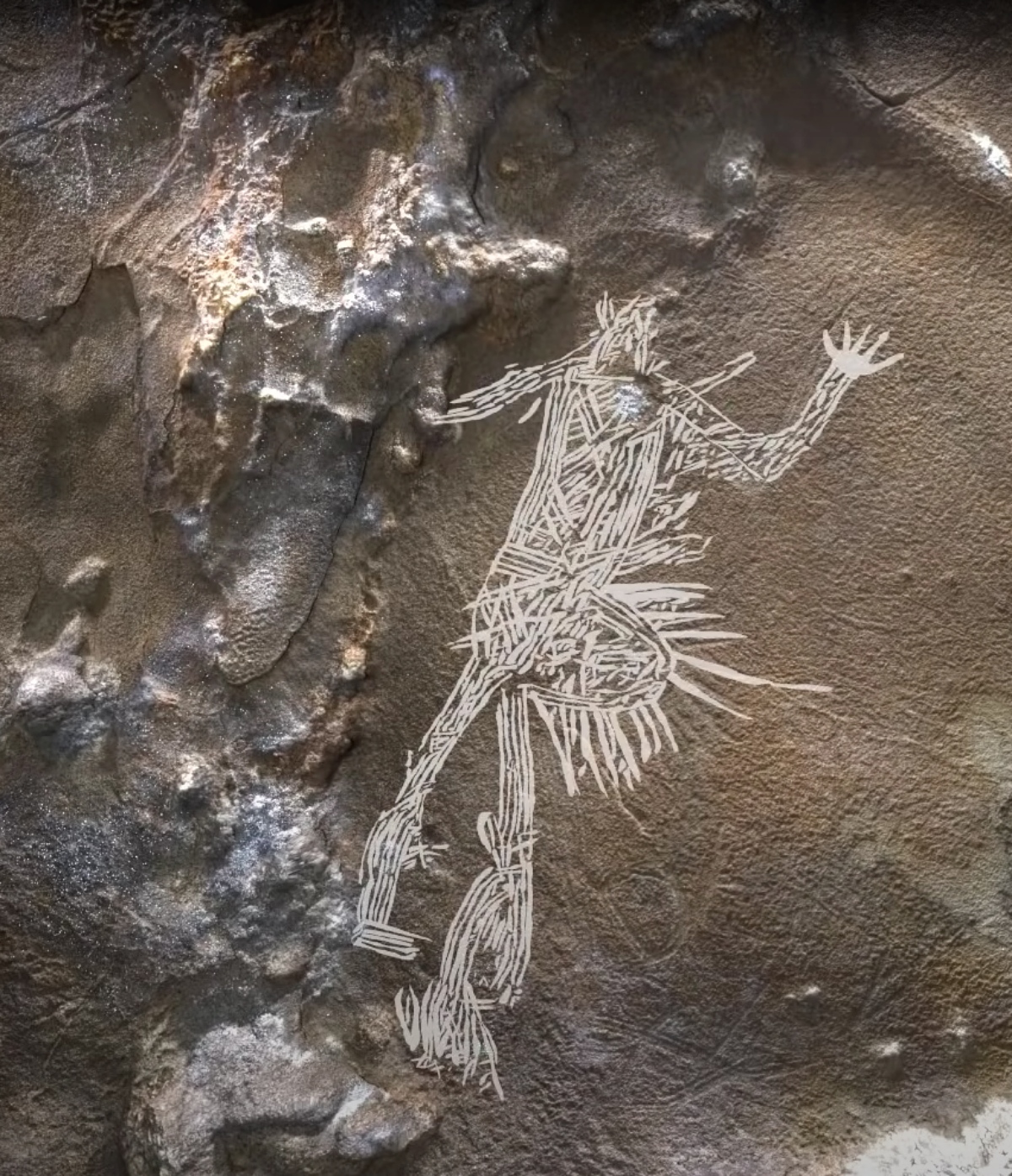In the late 1990s a group of ancient paintings were discovered in a cave in Alabama. At the time they were documented, but now even more remarkable glyphs etched from mud on the cave walls have been found using high-resolution 3D photogrammetry. These images are then stitched together digitally to create a visual representation of the glyphs that were faint to see with the naked eye. The specialized equipment was also able to detect glyphs that were too large to be seen while crouching down in the low-ceilings of the cave.

These glyphs are thought to be the one of the largest collections of known cave art in North America. They are thought to date from around 1,000 years ago and feature images of humans (depicted wearing what is though to be traditional garb or regalia) as well as animals. Abstract shapes and designs of “swirling lines” were found among some of the representational glyphs.
This tradition of creating mud glyphs was previously thought to be largely restricted to the Southwestern US, as other cultures were not known to practice this form of expression. However, the numerous glyphs inside this cave show show a strong Southeastern tradition over many centuries. High humidity and abundant rainfall, such as is found in many areas of the South, quickly degrades ancient mud glyphs such as these. This may explain why caves filled with art like are so rare in the region.
Thousands of new glyphs were uncovered using these updated methods. The images were carved into naturally-occurring sediment residue to make the glyphs. Over the years, many of the older glyphs were drawn over to make way for new glyphs. Most of the cave glyphs found in this region date from 800-1600 CE.

8 fragments of ceramic vessels (coming from at least 5 vessels) have been found in the cave as well, each painted with a limestone-based temper. Radiocarbon dating of these fragments has shown they were made between 660–949 CE. Another artifact, a sample of river reed used in a torch, dates to 133–433 CE. Both date ranges fall within the Woodland period of history (1000-3000 before present), a time when pre-Columbian Native American cultures in the Mississippi River Valley were active in agriculture, mound-building, and in making art. Stationary life was centered around villages, with access to water making riverside habitation common. Examples of Woodland era civilizations include the Adena culture and the Hopewell tradition.
The location of the cave is being kept secret for now to protect the significant site from potential vandalism. The cave’s working name is “19th Unnamed Cave”– a random number assigned to the location to prevent its location from being discovered.
Beginning in 2017 Stephen Alvarez of the Ancient Art Archive began scanning the cave with the aforementioned 3D technology with the goal of mapping the many glyphs extant there. But, in doing so the previously undiscovered glyphs became visible. In all around 16,000 photographs of the cave were taken for this project, then the photos overlapped to create a full rendering of the area of the cave that contains the mud glyphs.
The study was led by Jan F. Simek from the University of Tennessee in Knoxville, with photos taken by Alan Cressler. The results of this most recent study of the cave were published in the May 2022 edition of the scientific journal, Antiquity.
You can see some of these intriguing cave glyphs highlighted in the video below.
SKM: below-content placeholderWhizzco for DOT

